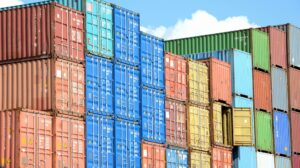Cost of Import
The total cost of import relies on delivery costs and legal entry into the U.S. Freight forwarders or shipping companies will also offer you their delivery charges. The importer or shipper must provide them with the details of cargo’s weight/size, the chosen means of transport, and the loading and discharge addresses to receive their offers.
To accurately calculate legal entry costs, such as customs fees, duties, and customs broker’s fees, one needs comprehensive information on the goods, value, country of origin, and additional information essential for different merchandise categories.
Customs Duty
To calculate customs duty on imported goods, the importer should refer to the Harmonized Tariff Schedule of the U.S., follow its general rules interpretations, and be familiar with trade agreements between the country of origin and the U.S. It may be necessary to check on provisional legislation and the Customs and Border Protection (CBP) rulings.
Whether additional taxes are required depends on the product being imported. For example, imports of tobacco products and alcoholic beverages are subject to Federal Excise Tax. The amount is established by the Internal Revenue Service and collected by the CBP on its behalf. To discover whether you need to pay additional fees on your imports, and the sum, you can contact an import professional at the port of entry through which the goods will be entering the U.S.
Customs Bond
The customs bond is charged at the import destination to protect the government against importers who do not fulfill any duties, penalties, etc., either when the goods are in CBP custody or after their release. The advantage is that it speeds up the clearance process, especially if you are a regular importer and have an established account relationship with the CBP.
The CBP directive on monetary bonds is quite complicated. Usually, regular shippers should get an annual continuous entry bond. For one-off shipments, a single entry bond is the better choice. Factor in the ISF bond into your costs if you are shipping via Ocean. It would be best if you had a customs bond before making the ISF filing.
ISF Filing Fee
This fee only applies to ocean freight and is charged by the customs broker or forwarder. The price is usually included in the Customs Clearance charge and covers accommodation conforming to the CBP’s ’10+2′ advance cargo reporting requirements. The information is prepared by forwarders from the Shipper’s Letter of Intent and Commercial Invoice.
The CBP uses the information to identify low-risk shipments for possible early release or prevent high-risk ones from sailing.
Your forwarder is also tasked with preparing for Customs Entry, which is compulsory before the ship arrives in port. This reporting contains the same information as for 10+2 reporting and supplementary information and is prepared from details on the Commercial Invoice and Ocean manifest (House B/L). The information must be sent to the CBP at least 24 hours before the merchandise is loaded. Late filing may result in hefty fines and a more thorough inspection of the cargo by the CBP, thus increasing inspection fees. In turn, this can delay delivery, which will also incur costs. To avoid this, ensure that your forwarder files for Customs Entry even before the vessel arrives in port. Also, make sure that the Commercial Invoice, ISF, and Ocean Manifest entries are all identical.
Customs Broker Fee
For first-time importers, customs brokers can simplify the import process. Also, paying for the services of a reliable and experienced broker can help lower the costs of the entire customs clearance process. The brokerage fee will likely be the most critical factor when you select a broker for your business. However, ensuring that you avoid errors in tariff code, tariff treatment, or customs value could save you fines that far outweigh brokerage fees. Brokers are also familiar with changes in rules and procedures, such as changes made during the COVID-19 pandemic.
Key Takeaway
The cost of customs clearance is difficult to estimate as it involves many parties during the process. Besides the above mentioned, importers may have to pay other fees, such as Cargo Insurance, a Demurrage and Detention/Warehouse Fee, and the Delivery Fee. One can choose to become a self-filer using an online platform such as eezyimport to significantly reduce costs as you do much of the work yourself. If you need assistance, eezyimport also provides a feature where a broker will guide you through the process, saving you time and money!





